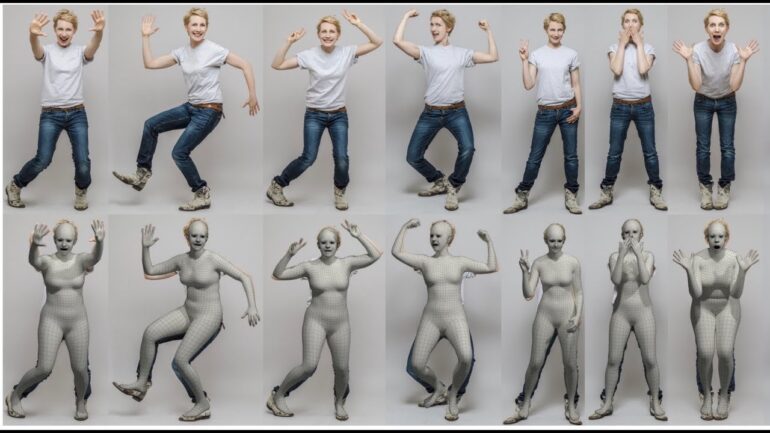TL;DR:
- SMPLer-X, a groundbreaking EHPS model, emerges from a consortium of top research institutions.
- The model’s versatility stems from its use of diverse datasets and minimalist architecture.
- A systematic benchmark for EHPS was established, highlighting the need for data scaling and reevaluation of existing datasets.
- SMPLer-X outperforms previous benchmarks, reducing errors significantly across major datasets.
- The model’s adaptability extends to new scenarios, making it a versatile foundation model.
- Specialized models derived from SMPLer-X excel in specific benchmarks, achieving an 11.0% improvement in NMVE.
- SMPLer-X’s impact lies in its contribution to scaling training data, data and model scaling, and specialization.
Main AI News:
In the ever-evolving realms of animation, gaming, and fashion, the quest for expressive human pose and shape estimation (EHPS) from monocular inputs has taken a monumental leap forward with the introduction of SMPLer-X. This groundbreaking research, spearheaded by a consortium of visionary minds from Columbia University, Nanyang Technological University, SenseTime Research, Shanghai AI Laboratory, The University of Tokyo, and the International Digital Economy Academy (IDEA), promises to reshape the landscape of human motion capture.
Unveiling SMPLer-X
SMPLer-X is not merely a model; it’s a paradigm shift. This generalist foundation model has been meticulously crafted to transcend the limitations of existing approaches. Unlike its predecessors, SMPLer-X draws strength from a diverse range of datasets, ensuring its adaptability and effectiveness across a multitude of scenarios. Its minimalist architecture, stripped down to the essentials for EHPS, allows for unparalleled scalability and serves as a springboard for future field research.
Analyzing the Data Spectrum
The driving force behind SMPLer-X’s emergence was a comprehensive analysis of available datasets. Researchers embarked on a journey to scrutinize 32 datasets, creating the first systematic benchmark for EHPS. This pioneering effort led to a revelation: the EHPS landscape is marred by significant inconsistencies between benchmarks. Such disparities underscore the pressing need for data scaling to bridge the gaps between diverse scenarios. The research underscores the necessity to rethink the reliance on existing datasets, advocating for a shift towards more potent substitutes with enhanced generalization capabilities.
Unprecedented Performance
SMPLer-X has shattered previous benchmarks with its exceptional performance. In a series of rigorous experiments involving various data combinations and model sizes, this powerhouse outperformed all expectations. The mean primary errors on five major benchmarks, including AGORA, UBody, EgoBody, 3DPW, and EHF, plummeted from over 110 mm to below 70 mm, marking a significant milestone in EHPS. SMPLer-X’s adaptability shone as it seamlessly navigated new scenarios such as RenBody and ARCTIC, underlining its prowess as a versatile foundation model.
Specialization at Its Finest
The brilliance of SMPLer-X extends beyond its generalist capabilities. Researchers have harnessed the same data selection methodology to cultivate specialized models that achieve state-of-the-art performance on benchmarks like EgoBody, UBody, and EHF. Notably, SMPLer-X has clinched a remarkable 11.0% improvement in NMVE, setting a new standard in the field. The AGORA leaderboard has witnessed the rise of SMPLer-X as it ascends to unprecedented heights.
A Triad of Contributions
SMPLer-X’s impact is threefold. First, it lays the foundation for scaling up the training data in EHPS by constructing a systematic benchmark from extensive datasets. Second, it delves into the realms of data and model scaling, offering a model that delivers balanced outcomes across diverse scenarios and uncharted datasets. Finally, it refines its foundation model, transforming it into a potent specialist capable of conquering various benchmarks.
Conclusion:
SMPLer-X is a beacon of progress in the realm of EHPS. It has redefined the boundaries of what’s possible, ushering in an era of enhanced performance, adaptability, and specialization. As the world embraces this transformative technology, the future of animation, gaming, and fashion looks brighter than ever before.

